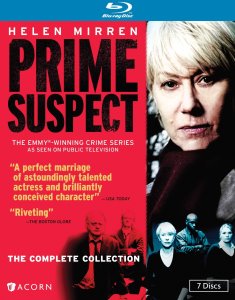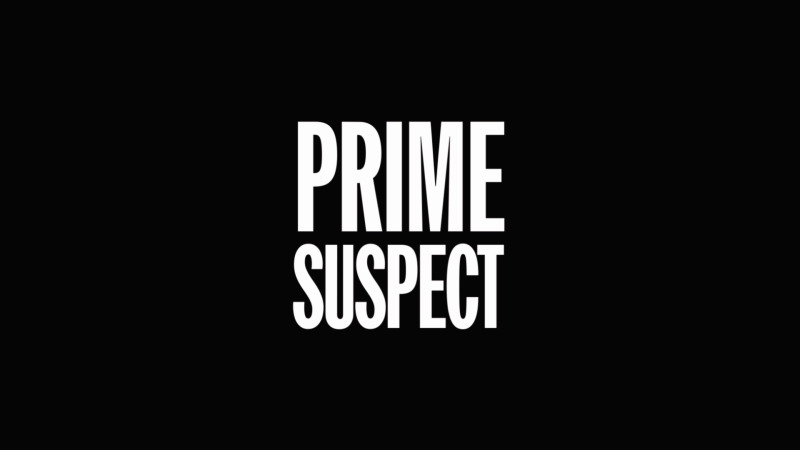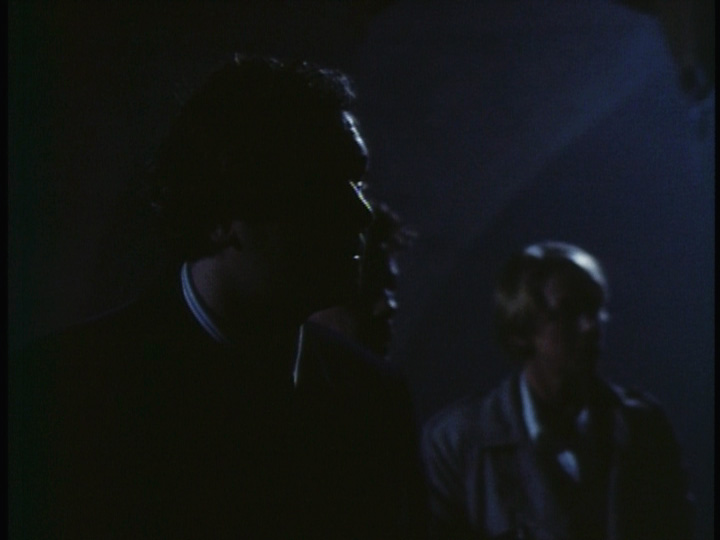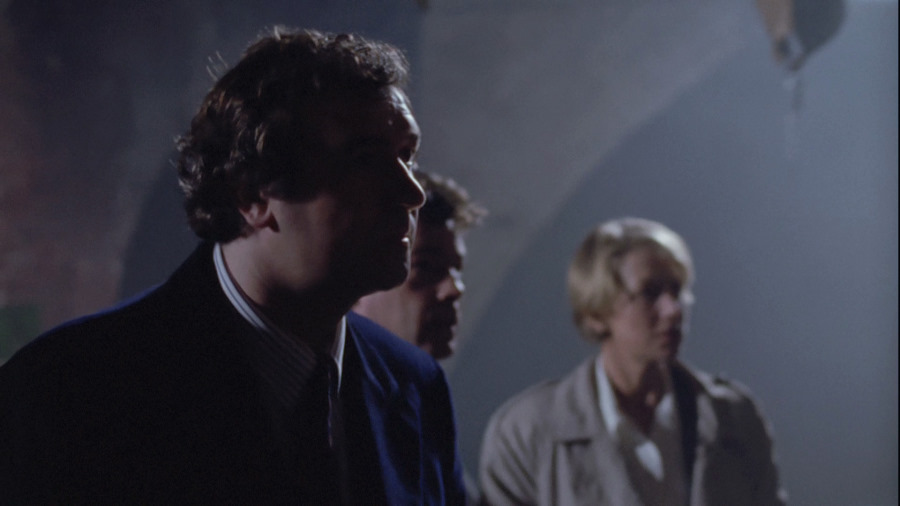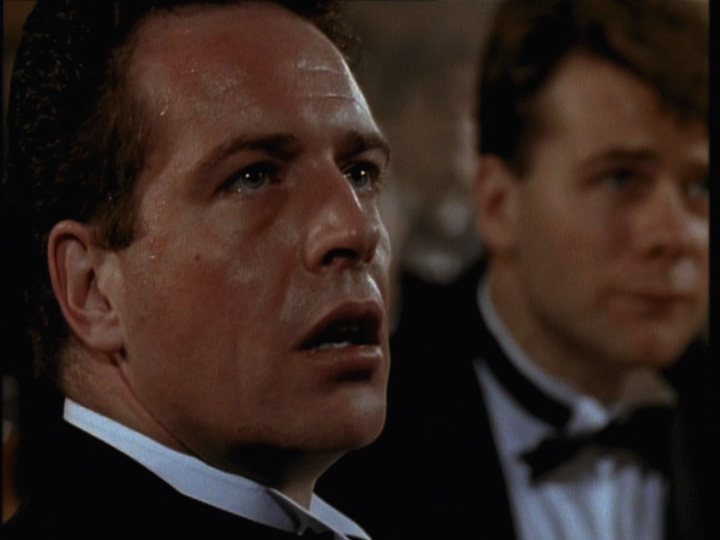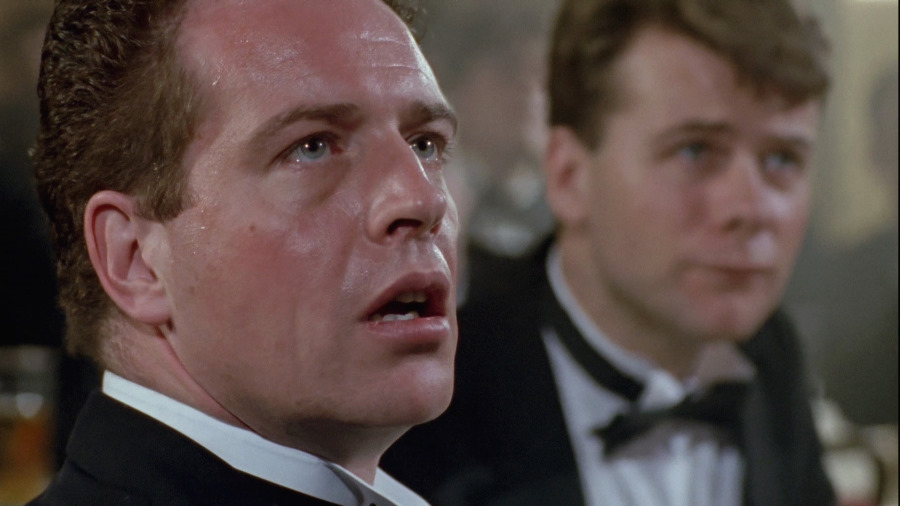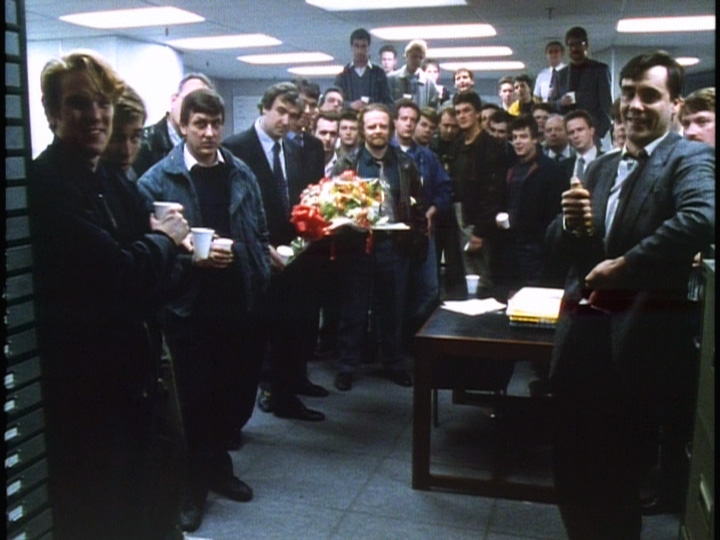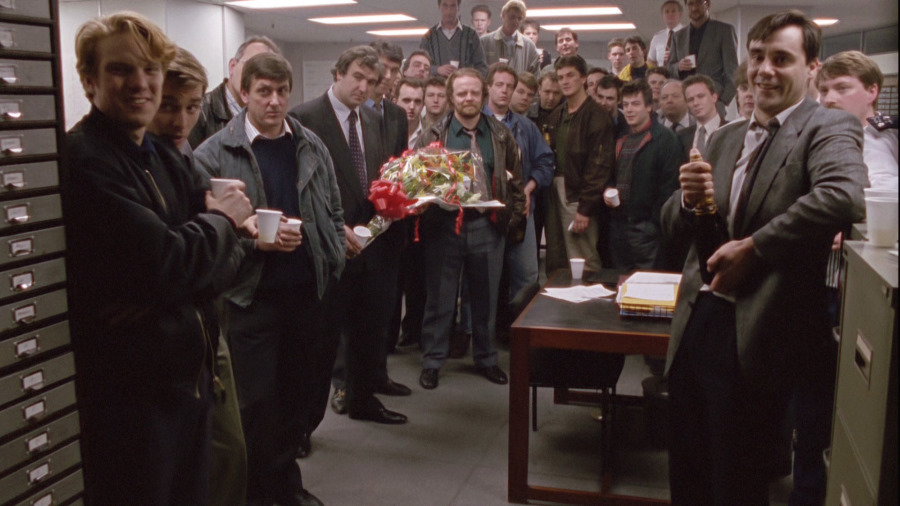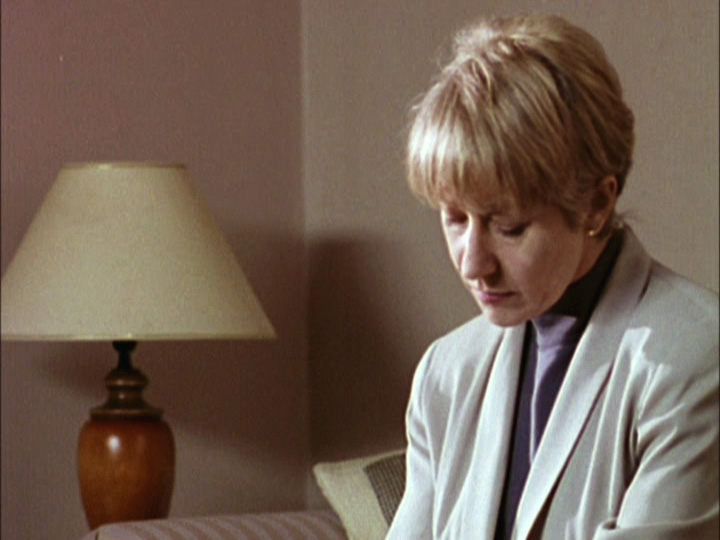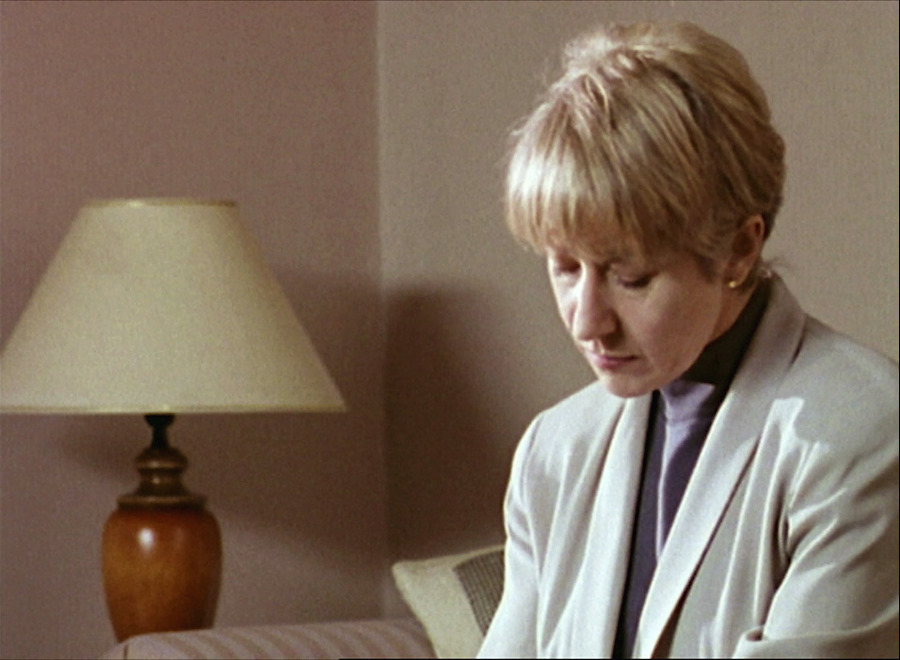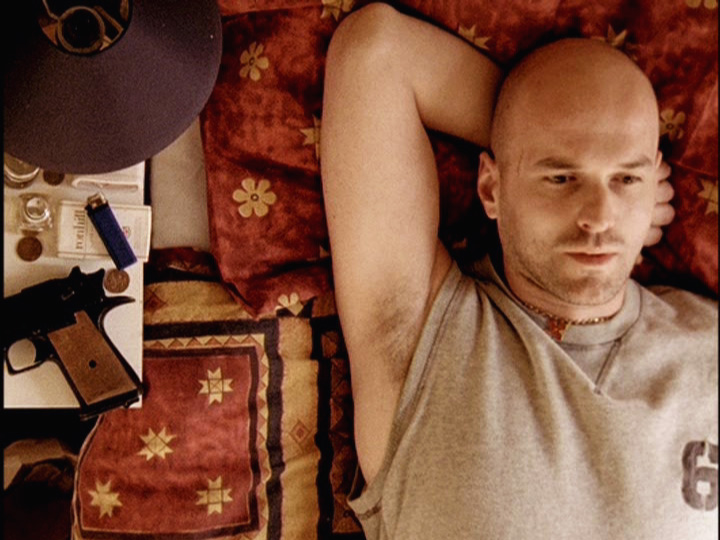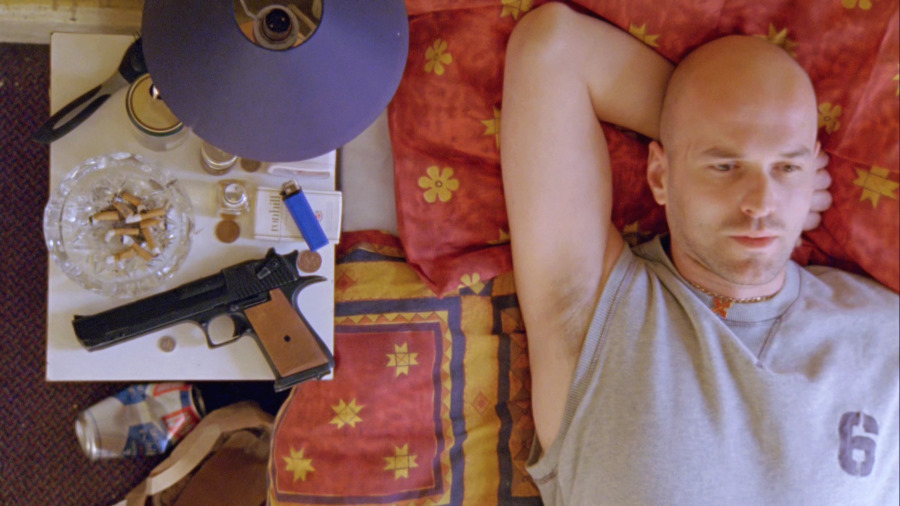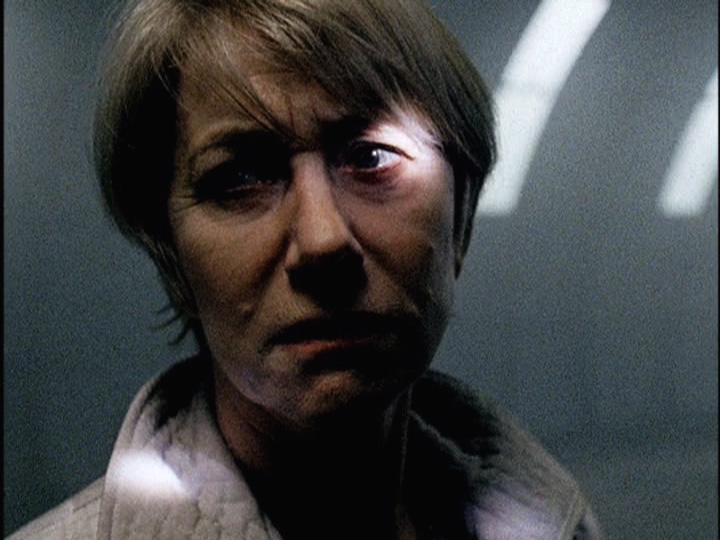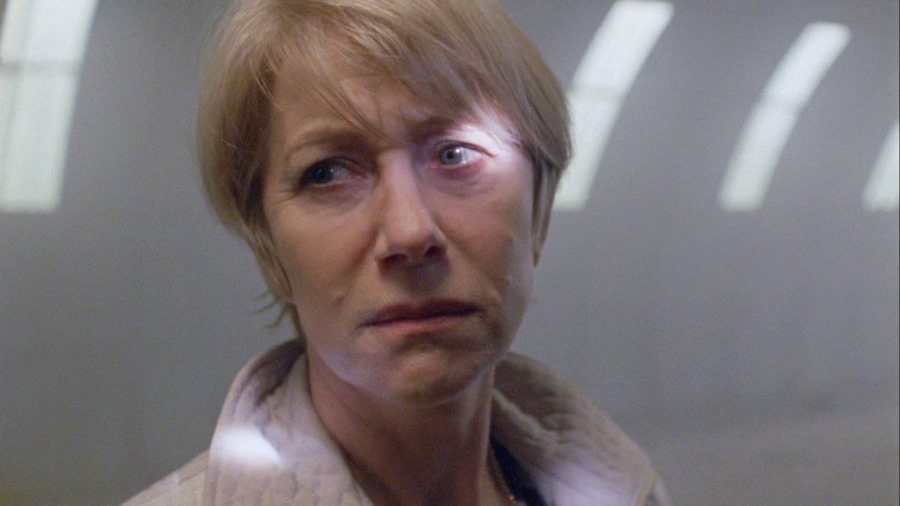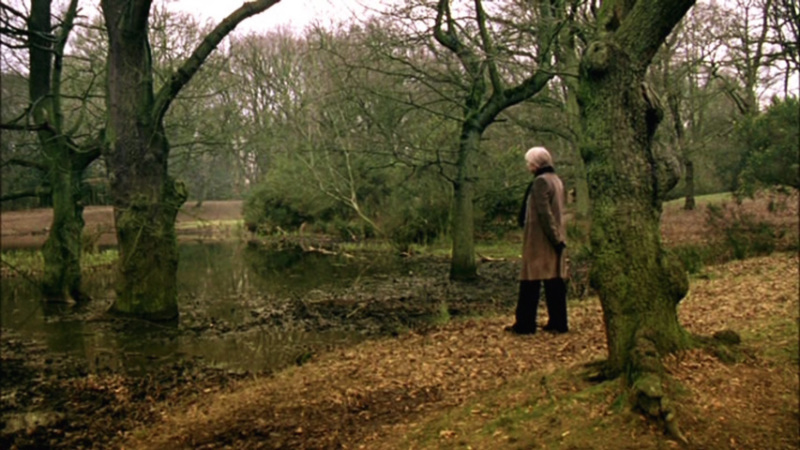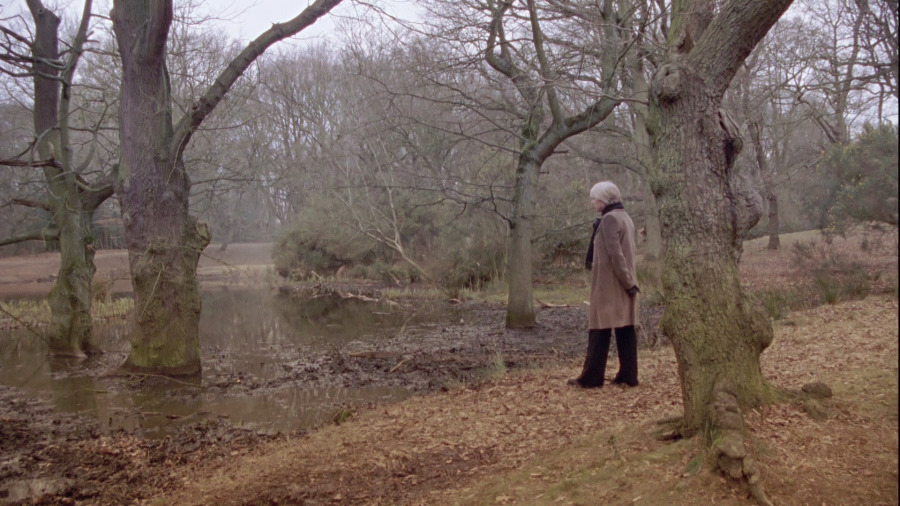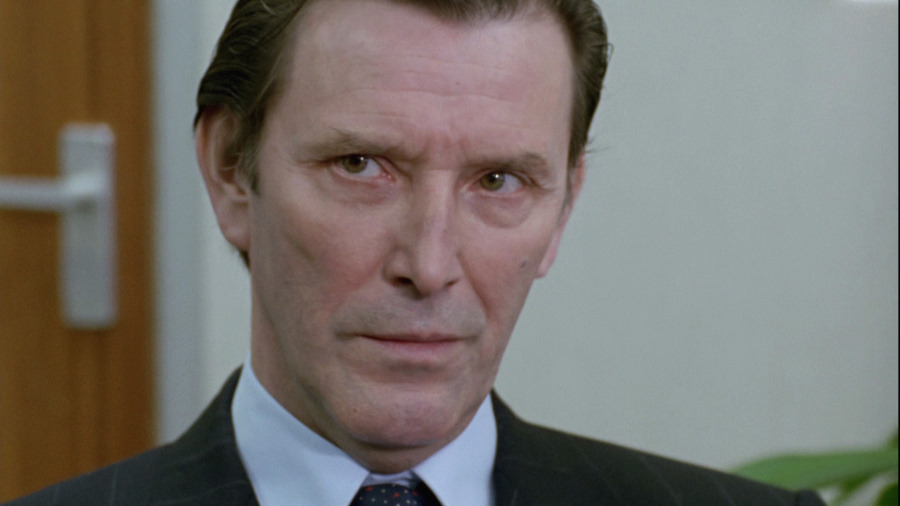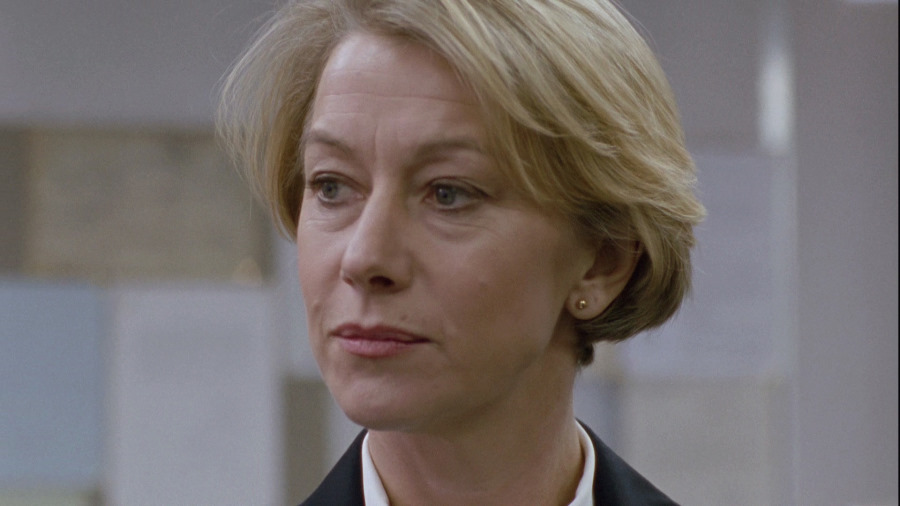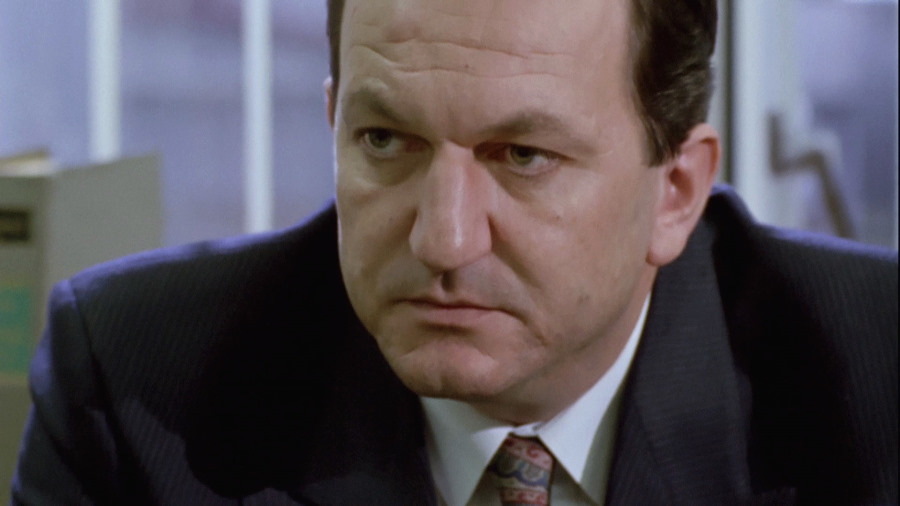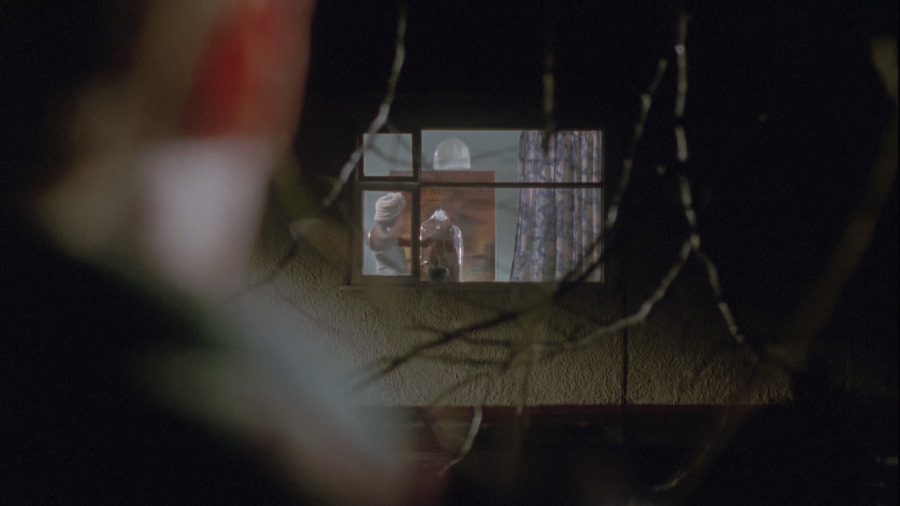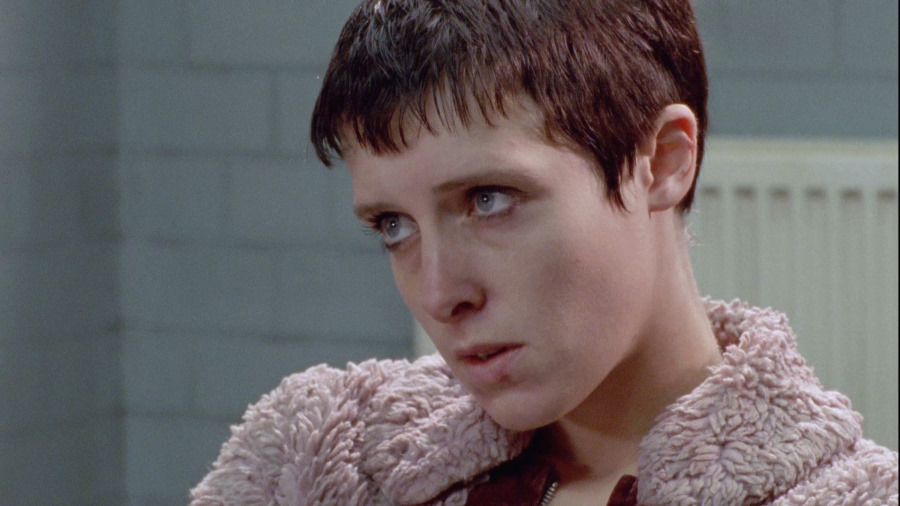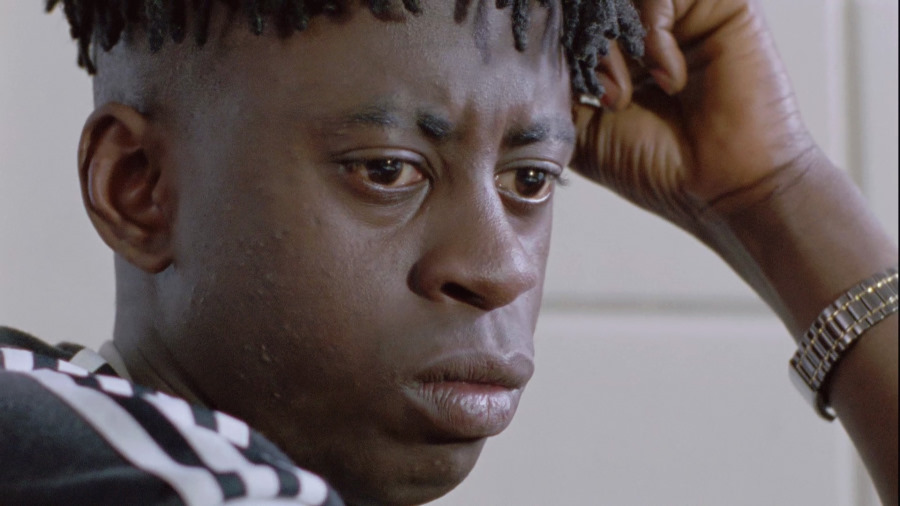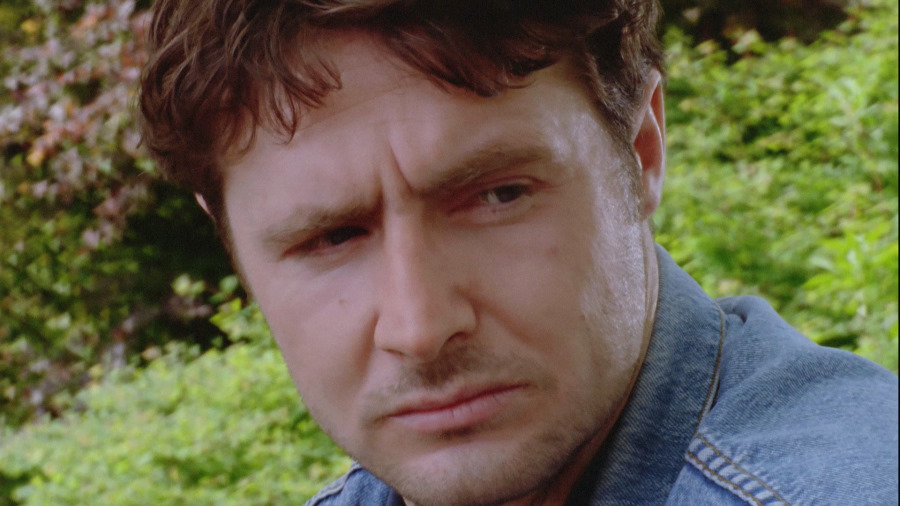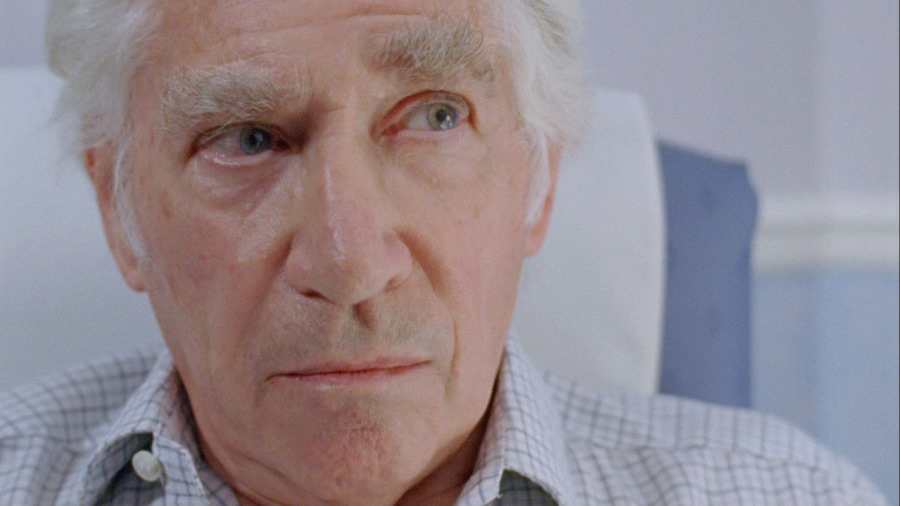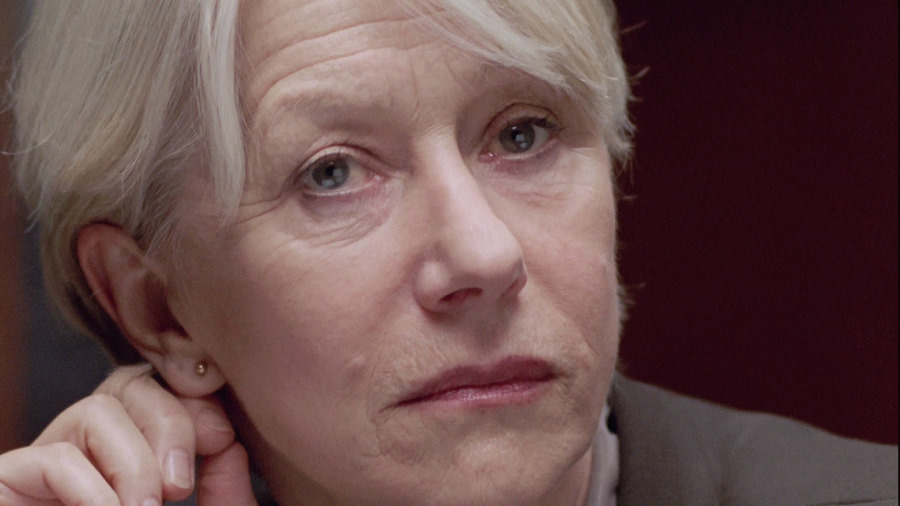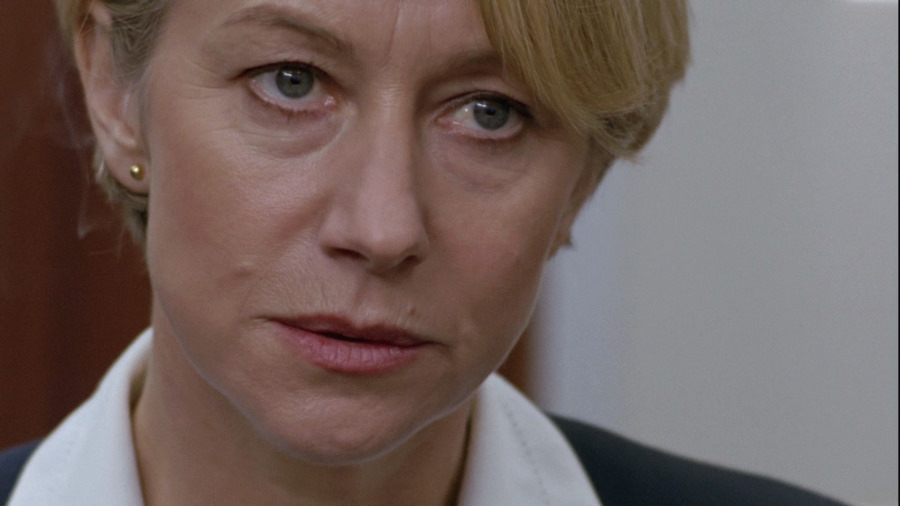Prime Suspect - The
Complete Series 1-7 [Blu-ray]
(Christopher Menaul, John Strickland etc. 1991-2006) Review by Leonard Norwitz Studio: Television:
Granada Television/ITV Productions
Blu-ray: Acorn Media Disc:
Region: 'A' Runtime: 1:39:05.773 Disc Size: 49,284,718,716 bytes Feature Size: 22,169,892,864 bytes Video Bitrate: 22.40 Mbps Chapters: 43 Case: Standard Blu-ray Case
Release date: August 27th, 2013 Video:
Aspect ratio:
1.78:1 (except Series
4.1: 1.33:1) Resolution: 108 0i / 23.976 fpsVideo codec:
MPEG4 AVC Video
Prime Suspect (1991)
Runtime: 212 min.
Feature Size: 37.96 GB
Avg Total Bitrate: 22~29 Mbps
Prime Suspect 2 (1992)
Runtime: 213 min.
Feature Size: 38.34 GB
Avg Total Bitrate: 22~29 Mbps
Prime Suspect 3 (1993)
Runtime: 215 min.
Feature Size: 38.83 GB
Avg Total Bitrate: 22~29 Mbps
Prime Suspect 4 (1995)
Runtime: 102/101/101 min.
Feature Size: 34.17 GB
Avg Total Bitrate: 16~23 Mbps
Prime Suspect 5 (1996)
Runtime: 209 min.
Feature Size: 38.15 GB
Avg Total Bitrate: 22~29 Mbps
Prime Suspect 6 (2003)
Runtime: 213 min.
Feature Size: 36.90GB
Avg Total Bitrate: 22~29 Mbps
Prime Suspect - The Final Act (2006)
Runtime: 192 min.
Feature Size: 34.18 GB
Avg Total Bitrate: 16~25 Mbps Audio:
DTS-HD Master Audio English 2.0 Subtitles: English SDH, none Extras: •
Prime Suspect Behind-the-Scenes Special (46:00)
• Series 6 Behind-the-Scenes Featurette (23:20)
• Photo gallery The Film: 8
Oscar® winner Helen Mirren is Detective Jane Tennison, “one of the great
character creations of our time” (Washington Post), in a series that won
more than 20 major international awards, including seven Emmys®
("Outstanding Miniseries" and "Outstanding Actress"), eight BAFTAs, and
a Peabody. Tenacious, driven and deeply flawed, Tennison rises through
the ranks of Britain’s Metropolitan Police, solving horrific crimes
while battling sexism and her own demons. "Rare is the drama that works
so well on two levels: as a crackling whodunit and as a finely tuned
character study of a strong but insecure woman trying to prove herself
in a man's world" (Time). The set includes all seven series of the
Emmy®-winning crime drama seen on public television.
Overview [Wikipedia]:
The series focuses on no-nonsense female British Detective Chief
Inspector (DCI) Jane Tennison (played by Helen Mirren), who is attached
to the Metropolitan Police (Scotland Yard). It is set mostly in London
and the outer areas, with Series 5 in Manchester. In later series,
Tennison is promoted to Detective Superintendent. The series shows how
she survives and thrives in a male-dominated profession.
The first series features sexism in the workplace as a significant
subplot and a barrier to the investigation. Sequels tend to downplay
this theme, relying on straight procedure or on other subplots – e.g.
institutional racism in Prime Suspect 2 and paedophilia, child abuse,
and prostitution in Prime Suspect 3. Tennison's difficulty in achieving
a balance between her work and her life outside the job and her
difficulty in maintaining stable relationships are recurring issues
within the series. Toward the end of Prime Suspect 3 she arranges to
have her pregnancy terminated. As the series progresses, she
increasingly relies upon alcohol to help her cope.
Each episode of the series involves a case where the prime suspect is
often identified early on, while the bulk of the episode focuses on
developments in the investigation: gathering evidence, dead ends, red
herrings, and the consideration of other suspects, as well as Tennison’s
private life that often spills over into her work at an emotional level,
rather than the typical American silliness of putting a loved one at
risk at every opportunity. Each of the seven series is devoted to a
single case running about 3.5 hours. The exception is Series 4, which
for some reason is comprised of three unrelated cases, each running
about 100 minutes.
Synopses:
Series One
Detective Chief Inspector Jane Tennison seizes the opportunity to head a
murder investigation after years of being passed over by her male
supervisors. With a suspect already identified and her own team openly
hostile, she uncovers errors and conflicting facts that point to a
cover-up within the force that threatens to derail the investigation.
Series Two
After winning her colleagues’ grudging respect, Tennison is assigned a
murder case fraught with racial tension in the African Caribbean
community. The skeletal remains of an adolescent female is found buried
behind a home near where a girl disappeared two years earlier. That’s
girl’s family was also involved in a crime that sent a young man to
prison, and now the community is again enraged with the police for what
they feel was a wrongful charge and conviction.
Series Three
Transferred to Vice in London’s Soho District, Tennison is keen to
investigate the murder of a teenage male prostitute and the world of
child pornography despite her supervisors’ objections. Tennison’s
nemesis, Sgt. Bill Otley (Tom Bell) returns to make life uncomfortable
for the DCI.
Series Four
Newly promoted, Tennison investigates three cases that cause strain in
both her personal and professional life, including new murders casting
doubt on a case she solved previously:
The Lost Child - A child's death points to convicted child molester,
Chris Hughes (Robert Glenister), who has completed his prison sentence
and now lives with a woman and her two young daughters, keeping his dark
past a secret from them. Hughes escapes from custody and takes his
girlfriend and her daughters hostage. The episode introduces us to Dr.
Patrick Schofield (Stuart Wilson), who later becomes Tennison's love
interest.
Inner Circles - Tennison investigates the murder of a country club
manager that unravels into a political scandal.
The Scent of Darkness - A series of murders are uncovered resembling
those by committed by George Marlow, the title character in the original
Prime Suspect. The fact that Marlowe is in prison when the new crimes
took place have encouraged Tennison's subordinates to reopen the case.
Tennison, however, is reluctant to support this idea, however, as she is
obsessively confident Marlow of Marlow’s guilt.
Series Five – Errors of Judgement
Tennison relocates to Manchester and becomes embroiled in a murder case
involving a local drug lord, a charismatic character known as “The
Street” (Steven Mackintosh) with whom she engages in a costly battle of
wits.
Series Six – The Last Witness
After a seven year absence Helen Mirren is back as the world’s most
driven police detective. Relocating back to London, Detective
Superintendant Jane Tennison risks her career after discovering that a
war criminal may be responsible for the torture and murder of a young
Bosnian Muslim refugee, taking her investigations to the Balkans itself.
Series Seven – The Last Act
Weeks away from retirement, with her father dying and herself struggling
to stay afloat from alcoholism that has exacted a massive toll,
personally and at work, Tennison takes on a case she hopes will end her
career with honors - the brutal murder of a schoolgirl.
Comment [LensViews]
I think it’s fair to say that The Killing’s Sarah Lund owes a
great deal to Jane Tennison. Denmark’s most recognizable primetime
female detective doesn’t have to contend with sexism in the workplace -
it is enough that DCI Lund is smart, obsessively dedicated and difficult
to work with. She’s not a smoker or an alcoholic, as is Tennison, and
doesn’t languish in self-abuse masquerading as relationships, so she can
spend most of her time, and ours, getting down to cases, for better and
worse. My, how times have changed in just twenty years!
Detective Chief Inspector Tennison is a strong woman in a man’s world.
More than that, she is in charge of men, most of whom give at best
grudging respect for the office, if not the woman. Even her boyfriend is
jealous of how much more of her time and energy she gives to her work
than to their relationship. Jane Tennison paved the way for equal
partnership in a way that makes Cagney & Lacey look like The Adventures
of Spin and Marty. How Tennison confronts sexist and stereotypical
attitudes and the kind of person she is and becomes in order to handle
the demands of her work are the things that gives Prime Suspect its
special edge.
Beyond Tennison’s difficulties with her colleagues and her ongoing
domestic struggles and battles with her own private demons, Prime
Suspect was, straight out of the box and onto its last episode, one of
the grittiest police procedurals on television, European or American,
network or cable, then and now. We may have our favorites elsewhere –
NYPD Blue, Crackers, Homicide, Law & Order, even The Wire –
but nothing touched Lynda La Plante’s often gruesome tales of some of
the worst social deviance that primetime television would allow. While
the French series Braquo has since raised the bar considerably in terms
of violence and amorality, shows like Prime Suspect and Forbrydelsen (The
Killing) demonstrate how well a police procedural can involve their
audience with story, context, and character. They show that it is not
only possible, but rewarding to keep their eye on the ball without
resorting to blowing things up, shoot-outs and car chases.
Prime Suspect is teeming with characters on all sides of the
investigation – witnesses, suspects and the constabulary itself – worthy
of any good actor and our attention. The most important recurring
character (in the first, third and seventh series) is Tennison’s
colleague and most knotty thorn in her side: Detective Sergeant Bill
Otley, who undermines as much as he helps. Otley pushes the limits of
his authority at all times, occasionally crossing that line in hopes of
getting Tennison off his back.
In supporting roles, some of Britain’s finest make important
appearances: from Tom Wilkinson, as Jane’s love interest in the first
episode, to Frank Finlay as her ailing father in the last two. In
between we are treated to the likes of David Thewlis, Johnny Lee Miller,
Ciarán Hinds, Peter Capaldi, Mark Strong, Phoebe Nichols, Robert
Glenister and James Frain. There’s even a small part for Ralph Fiennes
as the boyfriend of one of the victims in what is, rather surprisingly,
the least good scene in that episode. Among the directors for the series
we find Tom Hooper (The
King’s Speech) and John Madden (Shakespeare
in Love.) The music for most of the series was written by Oscar
winner, Stephen Warbeck (Shakespeare
in Love.)
Image:
5-8 NOTE: The below Blu-ray captures were ripped directly from the Blu-ray disc.
WI will get to the question of brightness and contrast in a bit but
first I want to settle the most discussed concern across Internet
bloggers: aspect ratio. In the States, for its first five seasons Prime
Suspect was televised in roughly 1.33:1, the last two, after a break of
seven years, in 1.78:1 widescreen. The announcement by Acorn that the
Blu-ray would bring us the entire series (with the curious exception of
The Lost Child from Series 4) in the default widescreen ratio for
high-definition television: 16x9, or 1.78:1, certainly peaked our
attention. Does this mean that the source was also widescreen, but was
cropped for TV back in the day, or that Acorn cropped open matte
sources, top and bottom, to achieve a wider aspect ratio?
And the answer is: Neither. . . and, both. Clearly, there is more in the
frame on the sides, but for the initial season there is also less top
and bottom, especially the top - a big mistake, in my opinion. The good
news is that this approach to framing does not pursue the remainder of
the series. Either way, two important questions remain: Does the result
create an appreciably different viewing experience aside from filling
our widescreen displays, and does the new framing make sense on its own
terms? Keep in mind that when we watched Prime Suspect in the early
1990s, we probably did not ask: I wonder what is being left out on the
sides of the frame? I didn’t anyway. Even so, I couldn’t help notice how
cramped the image was. The old cropping made for a palpably
claustrophobic experience. Indeed, the effect made dramatic sense,
supporting the personality of its protagonist, and I assumed this was
more or less the way it was shot and intended to be seen.
Compared to the original broadcast and DVD transfers, more or less in
1.33:1 academy ratio, the resultant widescreen high-definition picture
has more breathing room, first season excepted. At times the wider frame
reveals meaningful information out to the sides, at other times it seems
a waste of space - most of the time, the former. However, the initial
season does have framing problems, as my screencaps show. The frame is
not merely extended laterally, as they are in all later series (Episode
4.1 excepted), but zoomed as well, resulting in a framing that is at
times even more cramped than it was in 1.33:1.
From the second series out, the framers take away very little from the
top or bottom while continuing to brighten things. Acorn’s seventh DVD
season was transferred in widescreen, and here there’s no trimming at
all. Episode 1 from the fourth series The Lost Child, is a curiosity in
respect to both aspect ratio and image enhancement: It is shown here at
1.33:1 on Blu-ray as it was on DVD, but note how little is done to bring
the image in line with the general direction taken for the other series
in terms of brightness and color: it is not brightened nearly as much
nor is the color temperature dramatically altered. That said, this
episode doesn’t suffer in these areas as much on DVD as do most of the
other episodes, but the new transfer does stick out on Blu-ray for more
reasons than the shape of the frame.
Brightness and contrast was pretty much an unmitigated disaster on the
DVD where contrast was oftentimes boosted off the scale and the dark end
crushed beyond reason. Noise was completely out of control in anything
but the brightest scenes. I can well imagine that most potential buyers
will be doing cartwheels over what has been recovered here. Office
interiors seem to have gone from emergency battery lighting to proper
fluorescent overheads, lit well enough that color balance comes in line
with common sense as well. Flesh tones now resemble actual people. And
in dark alleys, stairwells, night shots, what once was in near total
darkness is now revealed. But all this comes at a price, and it is
important, I think, to come to terms with this before giving one’s final
endorsement.
As if to reinforce the idea of a dramatically relevant closed-in space,
the DVD image for the first three series is dark and murky. Shadows are
pretty much a lost cause, but even well lit areas, such as the
inspector’s offices, are unrealistically overcast and musty, to say
nothing of some pretty bizarre color balances. Nighttime scenes on the
DVD could pass for the real thing, but there is no corresponding wash of
light on what ought to be well lit rooms. The new Acorn Blu-ray tends to
err in the opposite direction, though it makes for a far less exhausting
viewing experience. A telling example of the difference between formats
is seen in the following screenshot comparison:
(DVD -
TOP - Acorn Media - Blu-ray -
BOTTOM)
The scene is of a garage near the end of the first series: the only
light sources come from the detectives’ flashlights and a large skylight
behind them. In the screenshot they are standing in shadow in an area
where there is no light at all except what little may be reflected off
the garage wall in front of them from the overhead light behind them.
Now you may say that the DVD lighting is just a waste of our time - you
can hardly see anything but an outline of the detectives. The Blu-ray,
on the other hand, bathes them in a surreal wash of light to reveal
expression and relationship, but it ignores reference to the real world.
Overall brightness throughout the episode is raised to a point that
tends to flatten the contrast. Gone now is any hint of the earlier
video’s noirish appeal, absurdly crushed though it was, which is a real
loss. Instead, much of the first three seasons look like generic
television, without an identifying signature - too much Marcus Welby,
not enough Hill Street Blues. On the other hand, we see everything
that’s going on in the frame without having to question what it is.
Given the extent of overall improvement there is on the Blu-ray I feel a
bit sheepish carping on anything so esoteric as the dramatic
implications of light. But make no mistake, this new Prime Suspect is a
very different presentation in every possible way.
Color is somewhat desaturated, but not filtered or tinted. The Blu-ray
scores massive points in this are compared to the DVD, whose color is
nightmarish for the first to or three seasons. The DVD image suffered
from a great deal of contrast boosting, especially at the black end,
which contributed to its documentary, noirish look, yes, but made for an
exhausting viewing experience. Production values on the set didn’t help
much for video presentations of the day – in the States, anyhow - but
the main culprit was a transfer from PAL that made for a watchable but
uninvolving visual experience. Noise on the Blu-ray is present in the
dark patches but those scenes are generally fleeting - again, much, much
improved over the DVD. Despite the interlaced presentation, motion is
nicely controlled, not that there is a great deal to test the issue. The
following comparison shows an instance where considerable “restoration”
was performed.
It almost goes without saying, but I’ll say it anyhow: Acorn’s Blu-ray
makes for a significant step up in regards resolution and sharpness. I
mean: a significant step up, even in the first series which is so horrid
on the DVD that it was hard to imagine a high definition transfer could
shed any light on the subject. There are still shots that remain cottony
(and there’s a half-minute sequence in Series 5 that, for no apparent
reason suddenly looks as though shot at 240i) but most of the series
benefits greatly from the higher resolution. Close-ups are often
impressive in this respect, small groups in good light are revelatory,
but wide shots in poor light, even with the Bly-ray’s brightness boost,
often remain dodgy. The overall impression however is very much a plus
despite what appears to be some minor scrubbing now and again. CLICK EACH BLU-RAY CAPTURE TO SEE ALL IMAGES IN FULL 1920X1080 RESOLUTION
(DVD -
TOP - Acorn Media - Blu-ray -
BOTTOM)
(DVD -
TOP - Acorn Media - Blu-ray -
BOTTOM)
(DVD -
TOP - Acorn Media - Blu-ray -
BOTTOM)
(DVD -
TOP - Acorn Media - Blu-ray -
BOTTOM)
(DVD -
TOP - Acorn Media - Blu-ray -
BOTTOM)
(DVD -
TOP - Acorn Media - Blu-ray -
BOTTOM)
Audio & Music: 10/8
The DVDs for the first four series were offered with mono tracks, the
remaining three in stereo. These were unremarkable in every way. The
dialogue and ambient sounds were well balanced, but somewhat muffled, which
didn’t help intelligibility for some of those “foreign” dialects, especially
up Manchester way. Curiously, the DVD indicated “Dolby Surround” for some of
the early seasons, but such was not the case, nor is it here. So says my
OPPO BDP-95. More important, the audio on the Blu-ray is uncompressed and,
unlike the image, unenhanced. Everything is clearer and more expressive,
with dialogue no longer coming off as a post-production afterthought.
The only downside is that the high definition audio track exposes the
weaknesses of the source, especially in regards balance. Listen, for
instance, to the medical examiner muttering to himself over the corpse of
the first victim in the opening episode, played just this side of creepy by
Bryan Pringle (Remember him as the waiter in Terry Gilliam’s Brazil?). The
audio engineer cranks up the level to what seems to be the loudest lick of
sound in the season. Stephen Warbeck’s music is used sparingly throughout to
reinforce the mood rather than to pump up the action. Points here for
writer/creator Lynda La Plante and the various directors and producers for
their reserve. Another instance of less is definitely more.
Extras:
4
Otherwise, there is nothing new here. The DVD boxes, whether released in
the U.S by HBO or by Acorn, didn’t have any bonus features to speak of
until the Series 6, when a 23-minute Behind-the-Scenes featurette was
included. The final series summed the whole thing up in the
retrospective 46-minute Prime Suspect Behind-the-Scenes Special. Both of
these are found here in the same places as on the DVD, anamorphic, but
not recomposed in HD. It would have been nice to have a feature about
the restoration, then this review would have been half as long.
Recommendation: 8
The new subtitles, courtesy RLJ Entertainment, Acorn’s parent company,
are neatly realized on the Blu-ray - their existence cannot be
understated for those of us on this side of the pond who do not speak
English. Sub’s were accessible on HBO’s DVDs through the computer but
not from the DVD player remote. Quel bizarre!
To say that the new Blu-ray makes for an entirely different Prime
Suspect is something of an understatement but not entirely
complimentary. It seems more like "enhancement" than correction at
times. It is clear that Acorn Media’s new packaging represents both a
huge step up from the DVD, but also a misstep for the first series in
respect to framing, and, throughout, a tendency to brightness regardless
of context, which robs the series of its special grit. That annoyance
aside, this new Blu-ray represents a serious step up from the existing
DVD on this side of the Atlantic. The entire seven-disc set is housed in
a single box along with the dreaded hinged pages. Sturdy slipcase
included. Recommended - if not unreservedly. Leonard Norwitz
August 2nd, 2013 |
![]()
![]()
![]()
![]()

![]()
![]()
![]()
![]()
